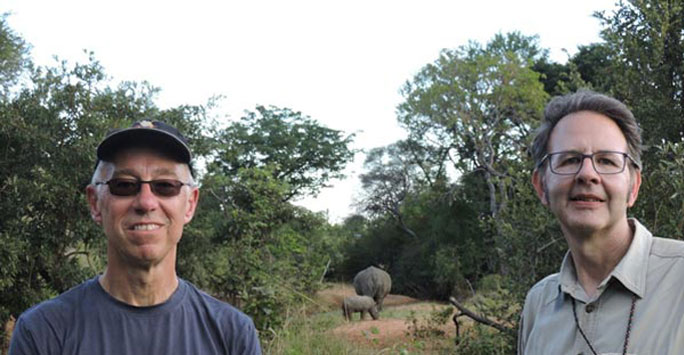Investigating the Deep Roots of Human Behaviour
Professor Larry Barham investigates the deep roots of human behaviour in Africa.
The challenge
When did humans begin to use complex tools? (And why does it matter?)
The first tools made by our human ancestors were pieces of stone struck from larger lumps, then modified.
Then came a revolution: tools made of multiple parts.
Complex tools.
Objects that had never existed before, created by putting together separate parts using several different processes.
This revolutionary development occurred before we, Homo sapiens, emerged.
The inventor was our direct ancestor, Homo heidelbergensis, who lived in Africa 600,000-200,000 years ago and was probably, by then, using language and symbols.
When did this technological advance take place? Why was it so significant to our development as a species?
These are the deep roots of our human behaviour that the project team are investigating.
Research action
The four year programme of excavation and research aims to enrich the database of evidence from existing African archaeological records, expand its geographical coverage and serve as a model which future researchers can adapt to locations in other parts of Africa.
Between 2017 and 2021 an interdisciplinary team will be working in Zambia excavating in three key locations:
- Victoria Falls
- Kalambo Falls
- The Luangwa Valley.
Previous excavations have found evidence in these places for the Early to Middle Stone Age transition (Mode 2/Mode3). This transition pre-dates the evolution of Homo sapiens and is characterised by a radical change in the way tools were imagined and made, with multiple parts combined into a whole. This is known as hafting or combinatorial technology.
Everything we make today is produced using tools made using other tools made of multiple parts. This research aims to unravel when and why this fundamentally new way of thinking about technology occurred. Part of understanding this transformation is learning what advantages this technology offered over older ways of making tools.
Working in partnerships
Our international team of researchers includes:
- Archaeologists -expert in innovative approaches to the study of stone tool use, notably use-wear and residue analysis
- Geographers -to help us understand the formation of the sites
- Geoscientists- who can date the deposits.
Find out more about us:
- Larry Barham(Liverpool, UK),
- Geoff Duller(Aberystwyth, UK)
- Andy Hein(Edinburgh, UK)
- Karl Lee(professional technologist, UK)
- Geeske Langejans(Leiden, Netherlands),
- Francis Musonda(University of Zambia)
- Perrice Nkombwe(Moto Moto Museum, Zambia)
- Veerle Rots(Liège, Belgium)
- Dave Thomas(Oxford, UK)
- Sumiko Tsukamoto(Hannover, Germany).
Outputs and outcomes
The project will gather information from local communities about plants and stone resources that were used historically for making tools.
Our project technologist will incorporate this knowledge into the making of replicas, including hafted tools for experimental use by our use-wear and residue analysts, with the aim of tracking changes in tool use across the Early to Middle Stone Age transition.
This experience will be used to create resources for schools in the UK and Zambia. For Britain’s Key Stage 2 History curriculum we’ll be using 3D printing technology to make toolkits and provide teachers with a PowerPoint presentation that draws on our research.
For Zambia's curriculum for junior secondary schools (social studies) we will produce an education pack for teachers with an updated timeline poster based on our research. For those near our excavations there will be open days for the public to see the work in progress and handle artefacts.

Now human evolution and Stone Age archaeology is being taught in Zambia’s schools – and we are contributing with the latest scientific understanding of the past.

Deep Roots blogs
Larry Barham blogs about what it's like to excavate in Zambia, as he heads off to begin his research into stone age tools.